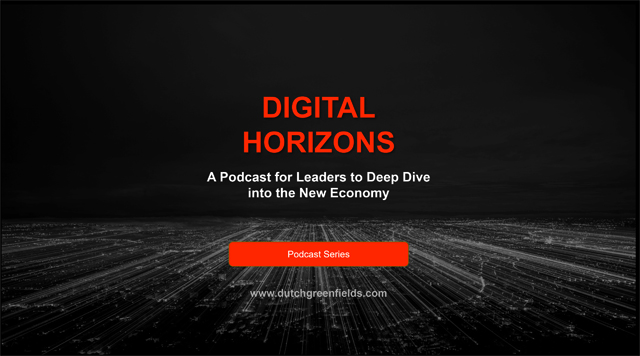In a world where digital transformation is accelerating disruption, leaders are constantly challenged to make decisions amid ambiguity. One powerful yet often overlooked tool for navigating uncertainty is the Rumsfeld Matrix. Originally made famous by former U.S. Secretary of Defense Donald Rumsfeld in a 2002 press briefing, the concept offers a simple yet profound framework to understand the types of knowledge (and lack thereof) that influence decision-making. For business leaders, founders, executives, and investors operating in the digital era, mastering this matrix can provide clarity in complex environments.
Background: The Origin of the Rumsfeld Matrix
Donald Rumsfeld’s statement during a Department of Defense briefing addressed the lack of evidence about weapons of mass destruction in Iraq. He famously said:
“There are known knowns… There are known unknowns… But there are also unknown unknowns.”
Though initially met with confusion, his statement has since been embraced as a valid epistemological framework to assess risk and uncertainty. It inspired the creation of the Rumsfeld Matrix, which divides knowledge and ignorance into four categories that help leaders evaluate their awareness and blind spots.
The Four Quadrants of the Rumsfeld Matrix
|
Category |
Definition |
Implications |
|
Known Knowns |
Things we know we know |
High confidence, low risk |
|
Known Unknowns |
Things we know we don’t know |
Manageable risk through research or expertise |
|
Unknown Knowns |
Things we don’t realize we know (tacit or hidden knowledge) |
Risk of overlooking valuable internal insights |
|
Unknown Unknowns |
Things we don’t know we don’t know |
High uncertainty and potential disruption |
1. Known Knowns
These are facts or data that are well understood and verified. For example, a company knows its customer acquisition cost (CAC) or employee turnover rate. These are areas of certainty and control.
Use Case: In digital transformation, these could include confirmed market trends, existing customer needs, or internal capabilities like infrastructure or team skillsets.
2. Known Unknowns
These are areas where you’re aware of gaps in your knowledge, such as uncertain market behavior or the future regulatory environment.
Use Case: A business may know it lacks insight into customer behavior in a new geographic market, prompting targeted research or piloting.
3. Unknown Knowns
These are pieces of information or insights that exist within the organization but are not utilized. This could be institutional memory, customer feedback not analyzed, or past learnings buried in reports.
Use Case: A company undergoing digital transformation may overlook previous internal innovations or underutilize employee knowledge, missing low-hanging fruit.
4. Unknown Unknowns
These are the blind spots that can cause the most damage. They represent risks or opportunities that the organization is completely unaware of.
Use Case: A startup may be unaware of an emerging competitor or a disruptive technology that renders their product obsolete overnight.
Why the Rumsfeld Matrix Is Relevant in Digital Transformation
Digital transformation is complex and full of uncertainties. Legacy systems, cultural inertia, shifting customer expectations, and emerging technologies all create a volatile environment. The Rumsfeld Matrix helps leaders:
- Identify knowledge gaps
- Prevent overconfidence in what’s assumed to be known
- Encourage diverse thinking and data exploration
- Anticipate risks and uncover hidden insights
- Foster a culture of curiosity and learning
In short, it offers a framework to de-risk transformation efforts and improve strategic clarity.
How Business Leaders Can Use the Rumsfeld Matrix in Practice
1. Strategic Planning
Use the matrix during strategic workshops to categorize knowns and unknowns related to market trends, customer needs, and competitive threats.
2. Digital Readiness Assessment
Map your digital capabilities and transformation goals using the matrix. What do you truly know? What assumptions are you making?
3. Scenario Planning
Combine the matrix with scenario planning to imagine future states and anticipate responses.
4. Innovation Roadmapping
Ensure you're not reinventing the wheel. Review internal data, failed pilots, and employee ideas to uncover unknown knowns.
5. Investor Pitching & Due Diligence
Use the matrix to communicate awareness of risks and proactive strategies. This builds trust and credibility with investors and stakeholders.
Benefits of Using the Rumsfeld Matrix
- Improved Decision-Making: Leaders make more informed choices with clearer understanding of their knowledge gaps.
- Risk Mitigation: Early identification of blind spots reduces costly surprises.
- Increased Agility: Organizations can pivot more effectively when they are aware of uncertainty levels.
- Enhanced Innovation: Surfacing hidden insights (unknown knowns) leads to more creative and practical solutions.
- Cultural Shift: Encourages open dialogue, learning, and intellectual humility across teams.
Examples in Action
Successful Use: Airbnb’s Pandemic Response
In early 2020, Airbnb faced a complete collapse in travel demand. The leadership, aware of the "known unknowns" regarding pandemic duration and consumer behavior, conducted rapid scenario planning and reprioritized internal strengths (like long-term stays and experiences). They turned unknown knowns—such as existing host data and behavior patterns—into key assets, helping them survive and eventually thrive post-pandemic.
Failure to Acknowledge Unknown Unknowns: Kodak
Kodak’s downfall is a classic example. The company knew digital photography existed (a known known) and even had internal R&D efforts (unknown knowns). But it underestimated the disruptive potential (unknown unknowns) and failed to act decisively—leading to bankruptcy and irrelevance.
Key Takeaways for Leaders in the Digital Era
- Embrace Uncertainty: Recognize that you don’t know everything—and that’s okay.
- Map Your Knowledge: Regularly assess your knowns and unknowns using the Rumsfeld Matrix.
- Leverage Tacit Knowledge: Look within your teams, data, and archives to uncover forgotten or underutilized insights.
- Create Safe Spaces for Curiosity: Encourage teams to challenge assumptions and surface blind spots.
- Use the Matrix as a Leadership Habit: Make it part of your strategic toolkit, particularly during innovation, transformation, or crisis moments.
A Valuable Leadership Capacbility
The digital age demands more than just speed—it demands clarity. The Rumsfeld Matrix doesn't just help leaders plan; it helps them think better. And in an age where strategic clarity is a competitive advantage, that might be the most valuable leadership capability of all.
About Rowdy Bijland
Rowdy is a strategic and creative thinker. He acts as a digital business partner with the mission to support leaders, their teams and organizations, to drive digital business strategy, innovation and transformation execution, with the aim to maximize potential and to contribute to the creation of sustainable value and meaningful impact. He released his first publication “Digital Disruption: A leader’s Guide for Business Development in the Digital Age” available both as paperback and eBook in the shop. In addition, he released a digital masterclass “Leading Digital Disruption” on Udemy. He is facilitator, moderator and keynote speaker for companies and organizations. Furthermore, Rowdy offers 1:1 digital business coaching for leaders worldwide.
To connect with Rowdy, please follow him on Linkedin.







